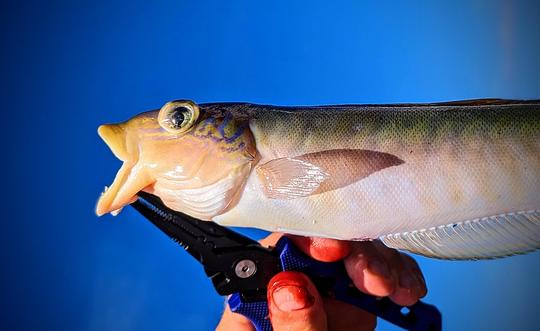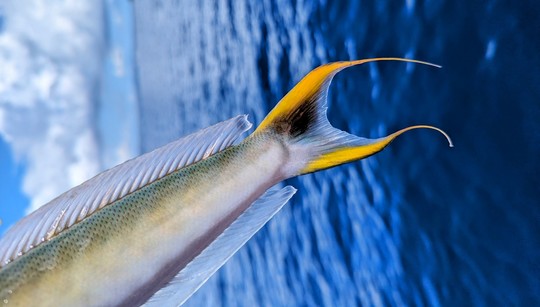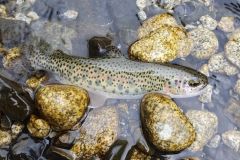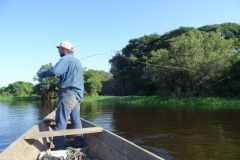Description of the vive tropicale
The sand tilefish or tropical livebearer (it has many different names.) has an elongated, spindle-shaped body that can reach 60 cm in length. Its overall color is light gray or lilac, with bluish highlights on the back and brown spots on the sides. Its head is broad and flattened, with a large mouth lined with small, pointed teeth. Its eyes are bulging and adapted to night vision. And it has a magnificent caudal fin that extends into magnificent yellow filaments.
Housing and lifestyle
The sand tilefish is found in the tropical waters of the western Atlantic, at depths of between 5 and 25 meters. It prefers sandy or sandy-muddy bottoms, close to coral reefs and seagrass beds. This fish is benthic, meaning it lives close to the bottom. It is sedentary and spends most of its time hidden in burrows that it builds itself by piling up shell and coral debris.

Power supply
The tropical vive is an opportunistic carnivore. It feeds mainly on small fish, crustaceans, worms and other invertebrates, which it hunts by lying in wait. Its hunting technique is unique: it positions itself at the entrance to its burrow and waits for its prey to pass within range of its mouth.
Reproduction
The sand tilefish is a protandrous hermaphrodite, meaning it is born male and becomes female during its lifetime. Reproduction takes place in summer, when the females release their eggs into the water.
Tropical snapper fishing
Tropical whitefish is not a commercially important species. However, it is occasionally caught by local fishermen, often in search of other species. I like to seek it out for its beauty and clearly the tenya or the madai are my favorite bait lures as you can see from these photos (Madai Nautilus 2.0 JLC Lures). The little squid strips make all the difference.

Ecological interest
The sand tilefish plays an important role in the marine ecosystem, not only as a predator, but also as a scavenger, cleaning the bottom of dead animals. What's more, its burrows also provide shelter for numerous marine species.
The tropical snapper is a fascinating yet little-known fish. Its secrecy and particular way of life make it a difficult animal to observe. That's why it's rarely caught. Finally, let me reassure you: it has nothing in common with the large European livebait and has no venomous apparatus.

 /
/ 







